If you're new to Reformer Pilates, the machine might seem a bit intimidating at first, but don’t worry—it’s designed to help you build core strength, improve flexibility, and enhance balance in a low-impact, controlled way. Whether you're looking to improve your posture, relieve joint pain, or try something new, Reformer Pilates offers a full-body workout tailored to your individual needs and fitness level.
In this guide, you'll learn what to expect in your first Reformer Pilates class, from the equipment you’ll use to the exercises you’ll perform. By the end of the class, you’ll feel more confident, stronger, and ready to make Pilates a regular part of your fitness routine.
What is a Pilates Reformer Machine?
The reformer is reputed to help you develop core strength, enhance balance, and aid in injury rehabilitation. It might feel intimidating at first — particularly the sliding carriage — but you’ll discover that practice brings both comfort and finesse. Reformer Pilates is for everyone from novices to athletes.
Brief history and origin
The Pilates method was invented by Joseph Pilates in the early 20th century. He felt that real health derives from harmony of body and mind. His history in gymnastics, martial arts and self-defense informed his philosophy on movement and fitness.
Pilates desired a method of rehab by which to repair individuals from injury and enhance health. He engineered the reformer to make people strong without straining joints. His work greatly influenced how modern fitness and rehab programs help people move better and avoid injuries.

Difference from mat Pilates
The original reformer featured a strong frame, a sliding carriage, an adjustable foot bar and resistance springs. This was unlike mat Pilates, which employs just your body and a mat.
The reformer enabled a greater variety and made it simpler to isolate certain muscles. Springs on the reformer are interchangeable for greater or less resistance—yellow, blue, and red springs are standard quantities.
Thanks to this adjustability, you can begin with lighter resistance and progress as you gain strength. While the sliding carriage can seem odd initially, particularly if you’re accustomed to stationary equipment, it assists you in emphasizing balance and control. Its intuitive design makes the reformer the perfect tool for full-body workouts.
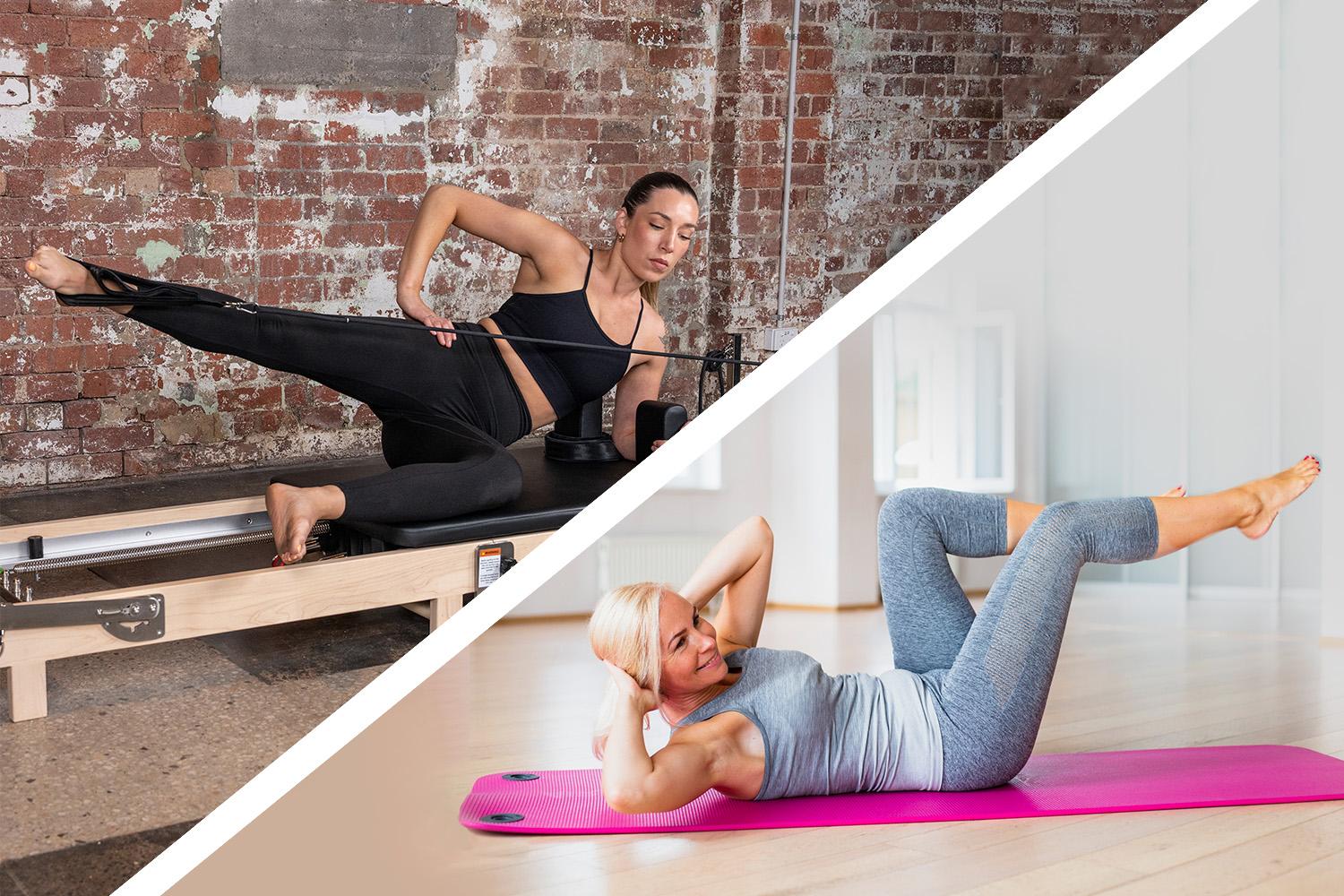
Pilates Benefits
Reformer Pilates isn’t just about movement — it’s about transforming how your body feels, functions, and flows. Here’s how it supports your body on multiple levels:
Deep Core Power
At the heart of every Pilates movement is your core — not just your abs, but your deep stabilizing muscles including the pelvic floor, obliques, and lower back. Reformer exercises activate these muscles through controlled resistance and precision. The result? A stronger, more stable center that supports your posture, protects your spine, and improves your balance in everyday life.

Enhanced Flexibility
Reformer Pilates stretches and strengthens at the same time. The machine’s sliding carriage and adjustable springs allow for fluid, full-range movements that lengthen muscles without strain. Over time, this promotes greater flexibility in the hips, hamstrings, shoulders, and spine — helping you move with ease and reduce the risk of injury.
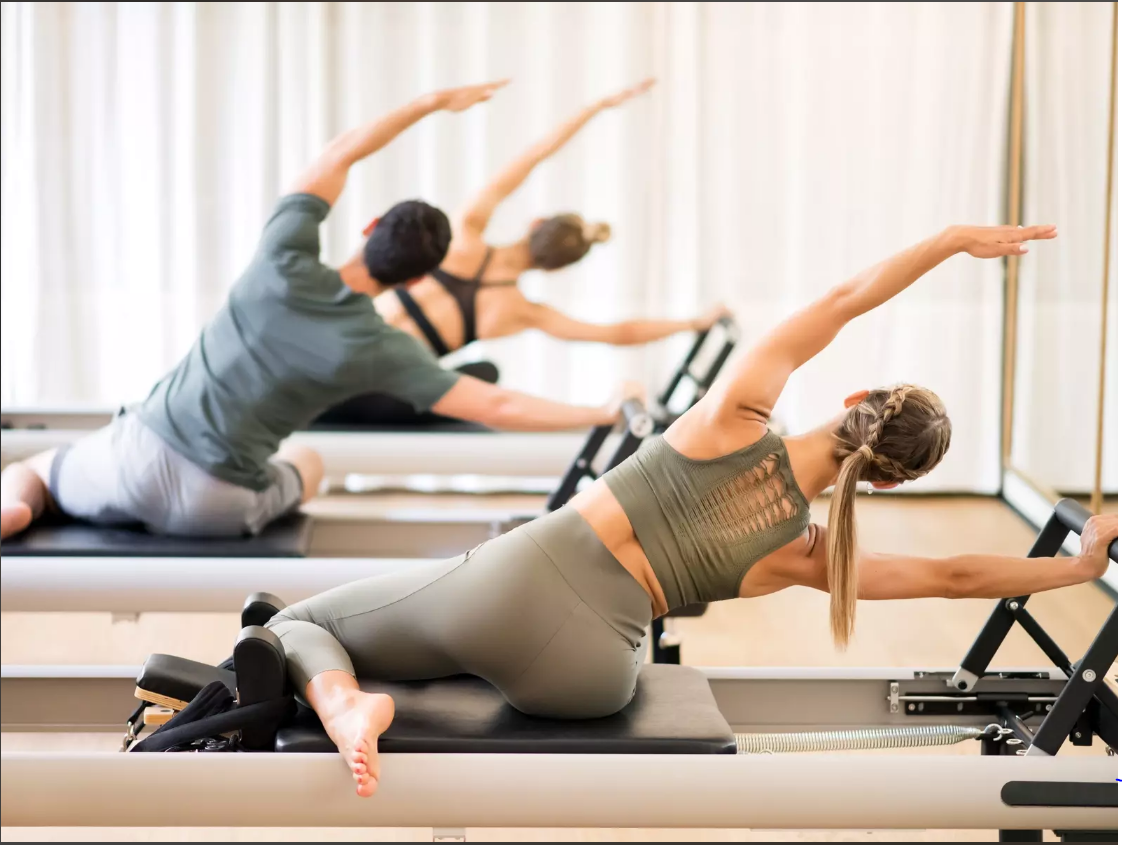
Postural Alignment
Many of us sit or slouch for hours each day, which can lead to muscle imbalances and poor posture. Pilates focuses on body awareness and spinal alignment, training your muscles to support an upright, neutral position. With consistent practice, you’ll notice less tension in your neck and shoulders, and a more confident, upright stance.

Protect Joint Health
Unlike high-impact workouts, Reformer Pilates is gentle on the joints. The machine’s resistance-based system cushions your movements, reducing stress on knees, hips, and shoulders while still challenging your muscles. This makes it ideal for injury prevention, recovery, and maintaining mobility as you age.

The Best Candidates for Reformer Pilates
- ● Beginner Reformer Pilates:If you're just starting to work out or trying Pilates for the first time, the Reformer is a perfect fit. The pace is gentle, the machine offers support, and it’s easy to learn at your own speed.
- ● People with Joint Pain :If you’re experiencing joint discomfort or recovering from physical issues, a Reformer Pilates workout provides low-impact movement that reduces stress and improves joint support.
- ● Office Workers:If you sit for long hours, Reformer Pilates can help correct poor posture, activate your core, and relieve tension in your neck, shoulders, and lower back.
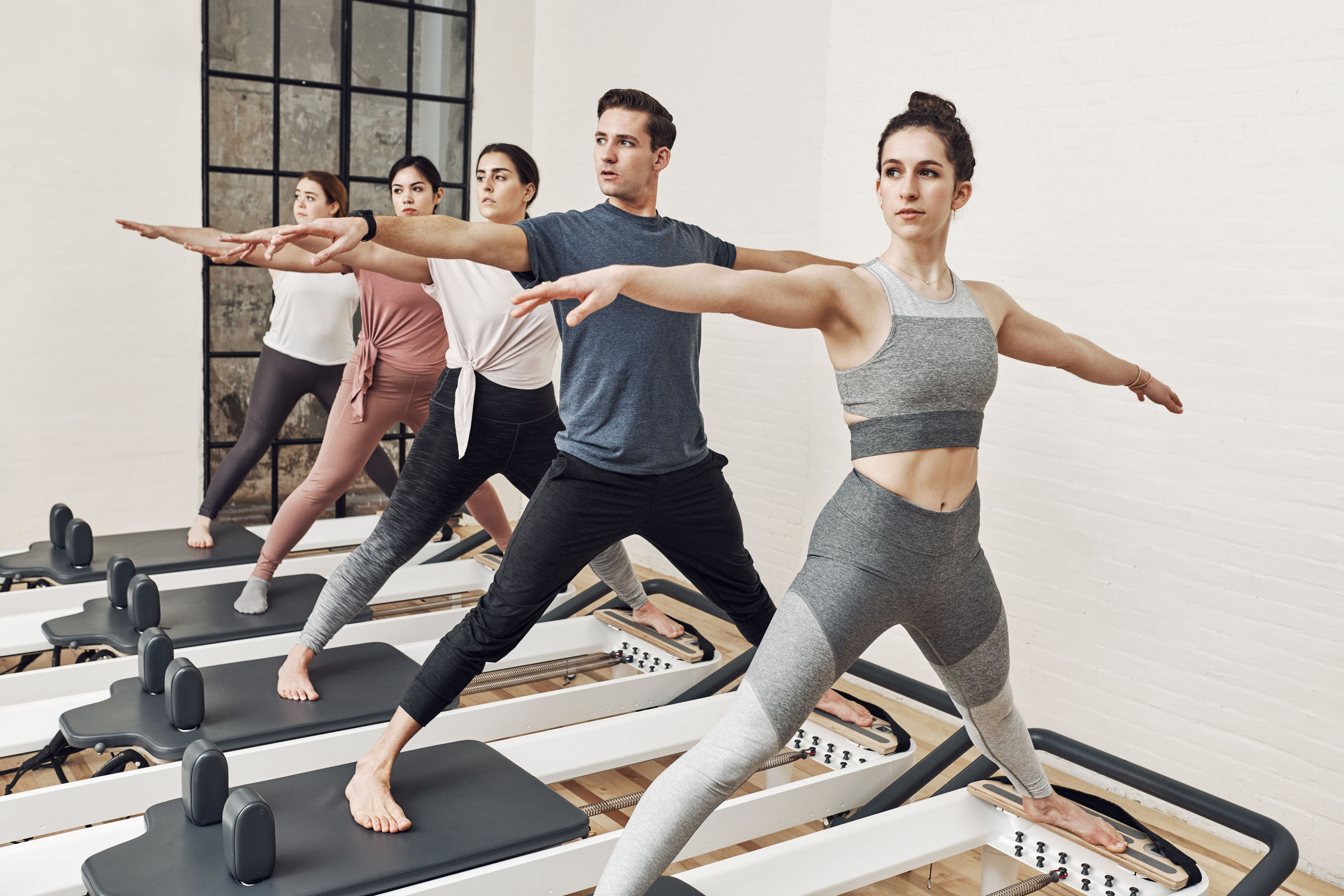
-
-
-
● Athletes:Whether you’re into running, lifting, or team sports, Reformer Pilates boosts core stability, improves flexibility, and helps prevent injuries—making it a great cross-training tool.
-
● Pregnant and Postpartum Women:With proper guidance, Reformer Pilates can safely support women during and after pregnancy. It’s excellent for building core strength and regaining control of the body.
● Seniors:Older adults can use the Reformer to improve balance, mobility, and daily function. The adjustable resistance makes it safe and effective at any age.
-
-
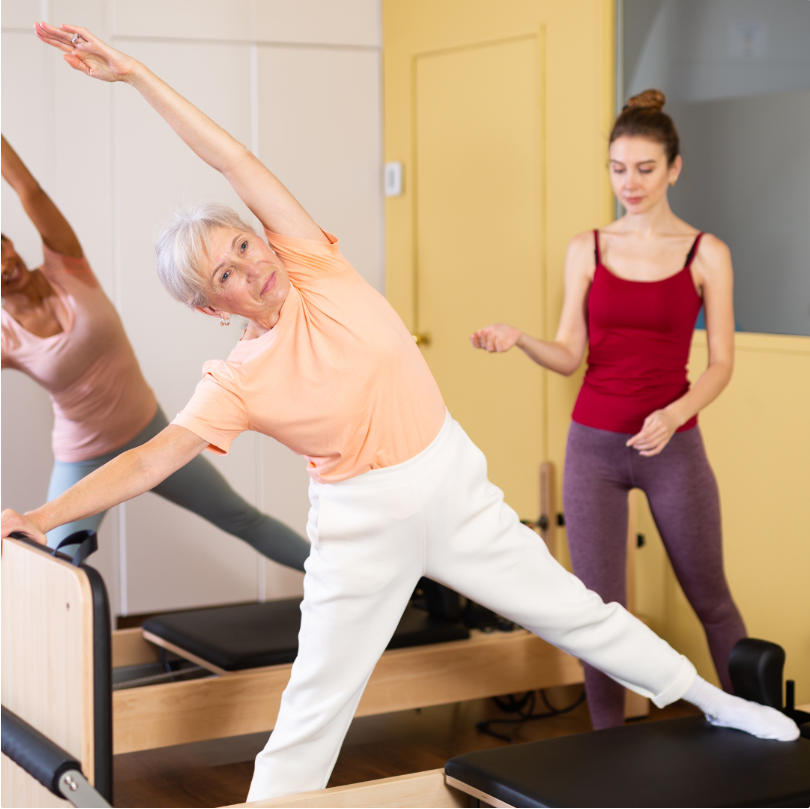
Equipment Overview
The Reformer
This is the main machine in Reformer Pilates workouts. It includes:
- ● Sliding Carriage: The flat, padded platform you lie, sit, or kneel on. It slides back and forth.
- ● Adjustable Springs: These control resistance. Your instructor will adjust them based on the exercise and your level.
- ● The Footbar: Used for footwork and balance. You’ll often push against it during leg exercises.
- ● Straps and Handles: You’ll use these for arm and leg work—pulling or pushing for resistance.
- ● Shoulder Blocks and Headrest: These keep you aligned and comfortable during movements.

Other Common Pilates Props
- ● Pilates Ring (Magic Circle): Great for adding resistance and activating inner thighs or arms.
- ● Resistance Bands: Used for gentle stretching or added tension.
- ● Foam Roller or Small Ball: Helps with balance, alignment, and core work.
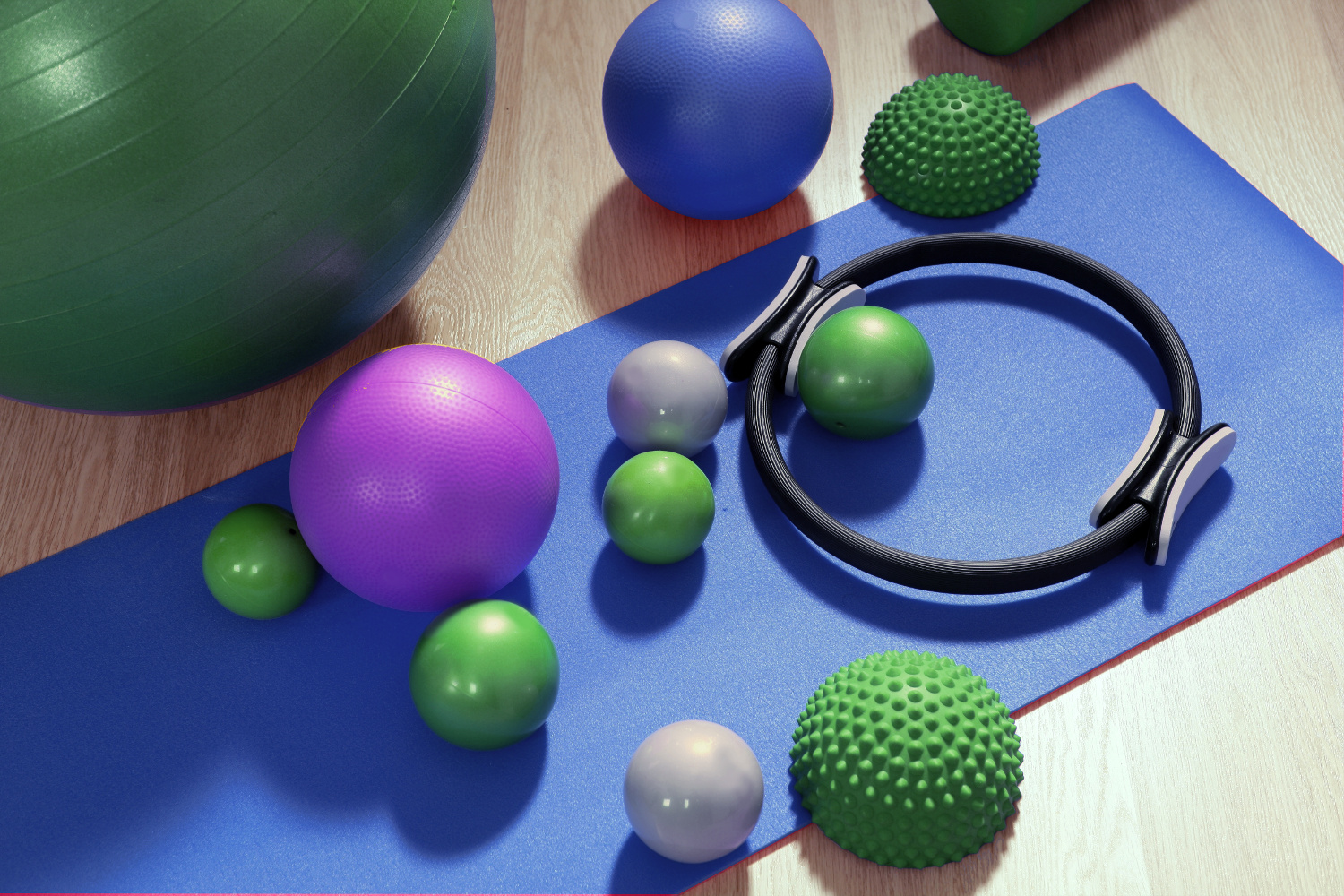
First-Time Pilates Tips
Your first reformer Pilates class can appear daunting, but understanding the fundamentals allows you to glean more from your initial experience. The reformer is designed to provide you with support, feedback and challenge as you work. Most newbies are uncomfortable initially, but you adapt to the shifting elements quickly.
What to Wear
For your first Reformer Pilates class, comfort and safety matter most. Here’s what to keep in mind:
- ● Choose form-fitting, stretchy clothes. This lets you move freely and helps your instructor see your alignment clearly.
- ● Avoid baggy clothing—loose pants or shirts can get caught in the machine.
- ● Grip socks are recommended for stability and hygiene, though not mandatory. Many studios allow bare feet, but check before class.
- ● Remove jewelry and accessories that could snag or distract.
- ● Bring a water bottle to stay hydrated.
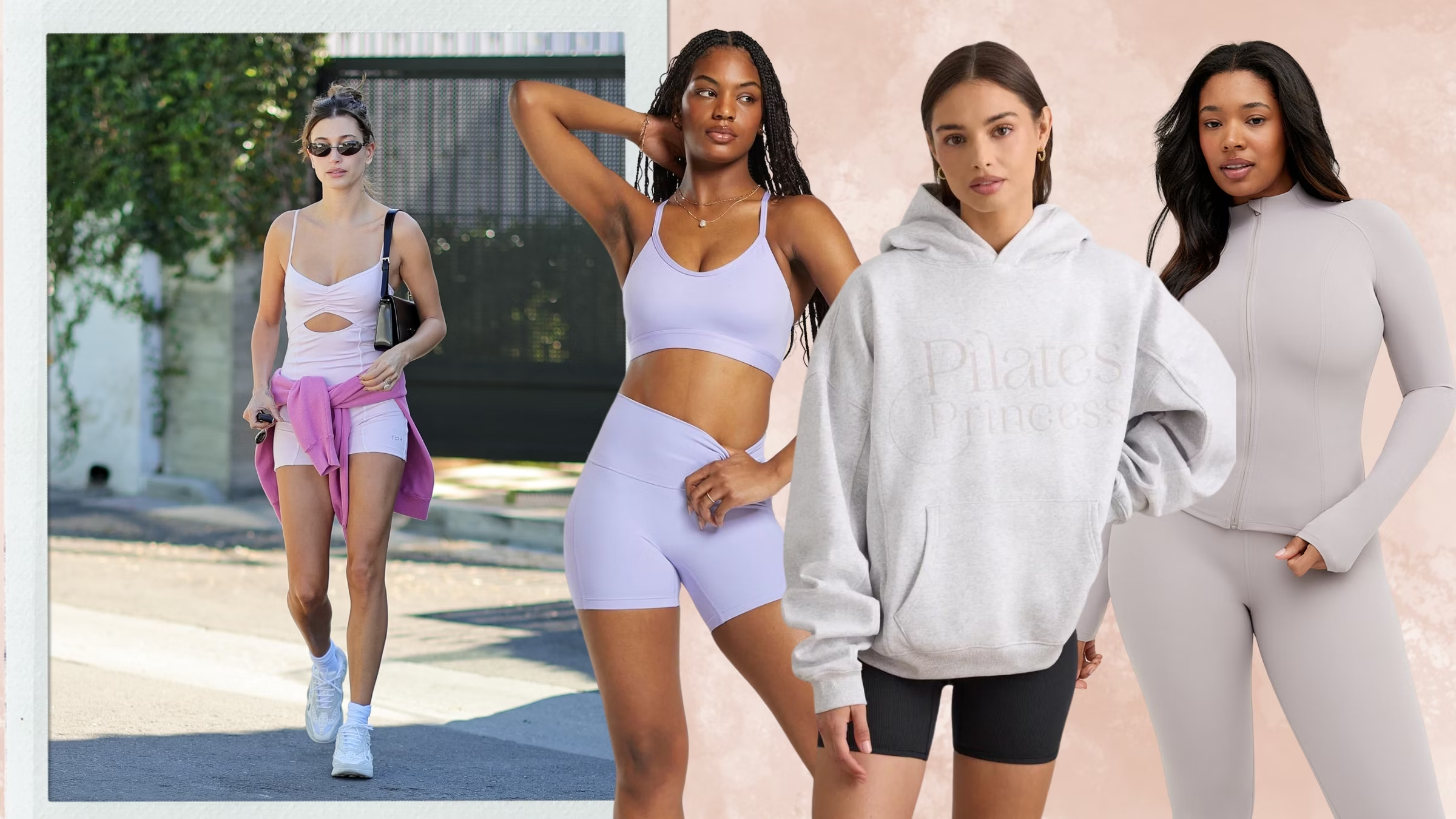
Studio Etiquette
For your first Reformer Pilates class, arrive 10-15 minutes early to settle in and silence your phone to avoid distractions. Handle the equipment carefully, and don’t hesitate to ask if you're unsure how to use something. After class, be sure to clean your space, including wiping down your Reformer. Respect others' personal space, listen to your instructor, and ask questions if needed. Finally, avoid wearing strong scents to keep the studio comfortable for everyone. Following these simple guidelines ensures a smooth and respectful experience for you and your fellow students.
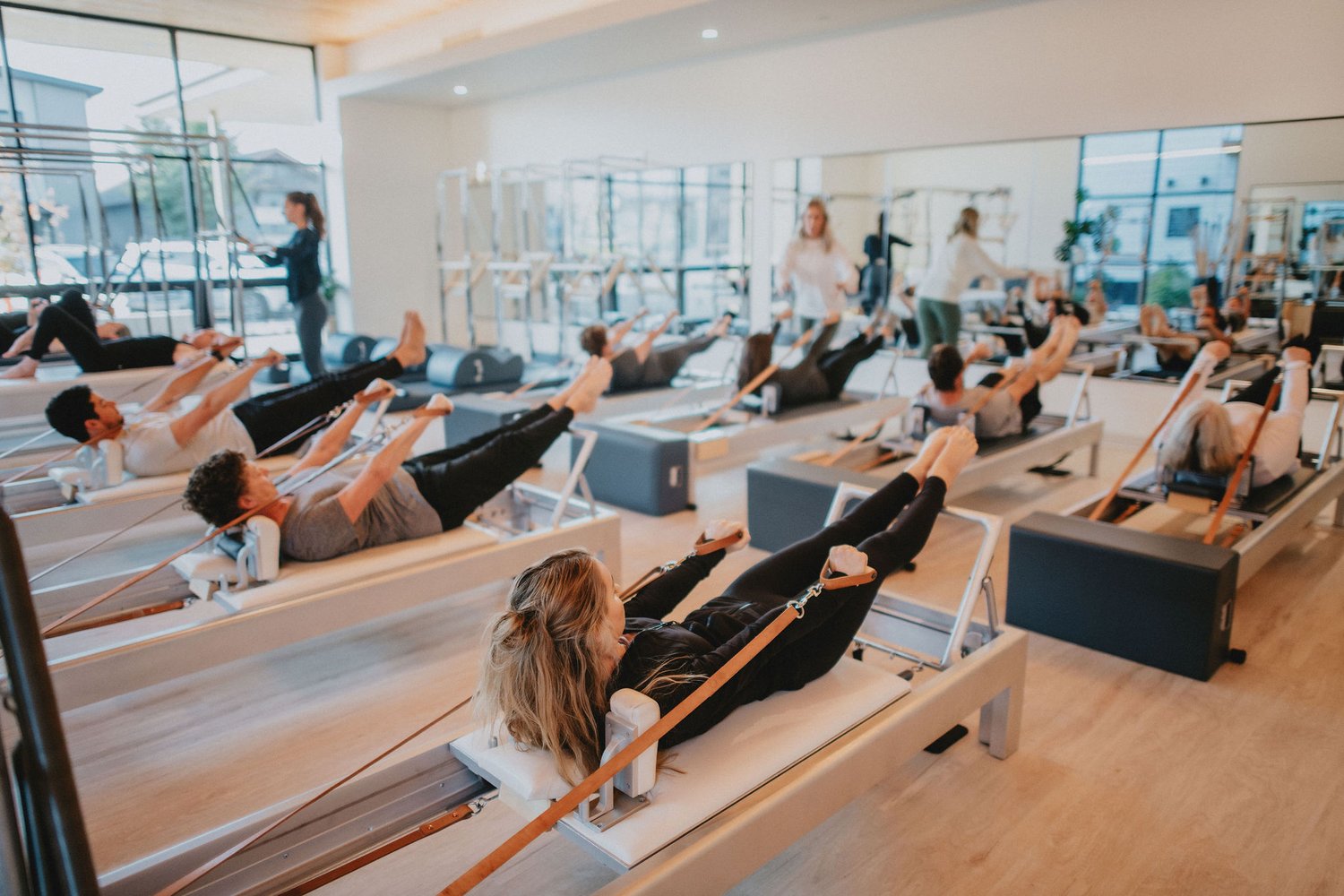
The Pilates Instructor’s Role
In a Reformer Pilates class, the instructor plays a key role in guiding you through each movement. They ensure you're using proper form to avoid injury and get the most out of each exercise. Your instructor will adjust your machine settings (like spring resistance) to suit your level and goals, offer modifications if needed, and provide verbal cues to help you improve your technique. They’re also there to motivate you and keep you focused throughout the class. If you’re ever unsure about an exercise or feel discomfort, your instructor is there to provide adjustments and advice, ensuring a safe and effective experience for everyone.
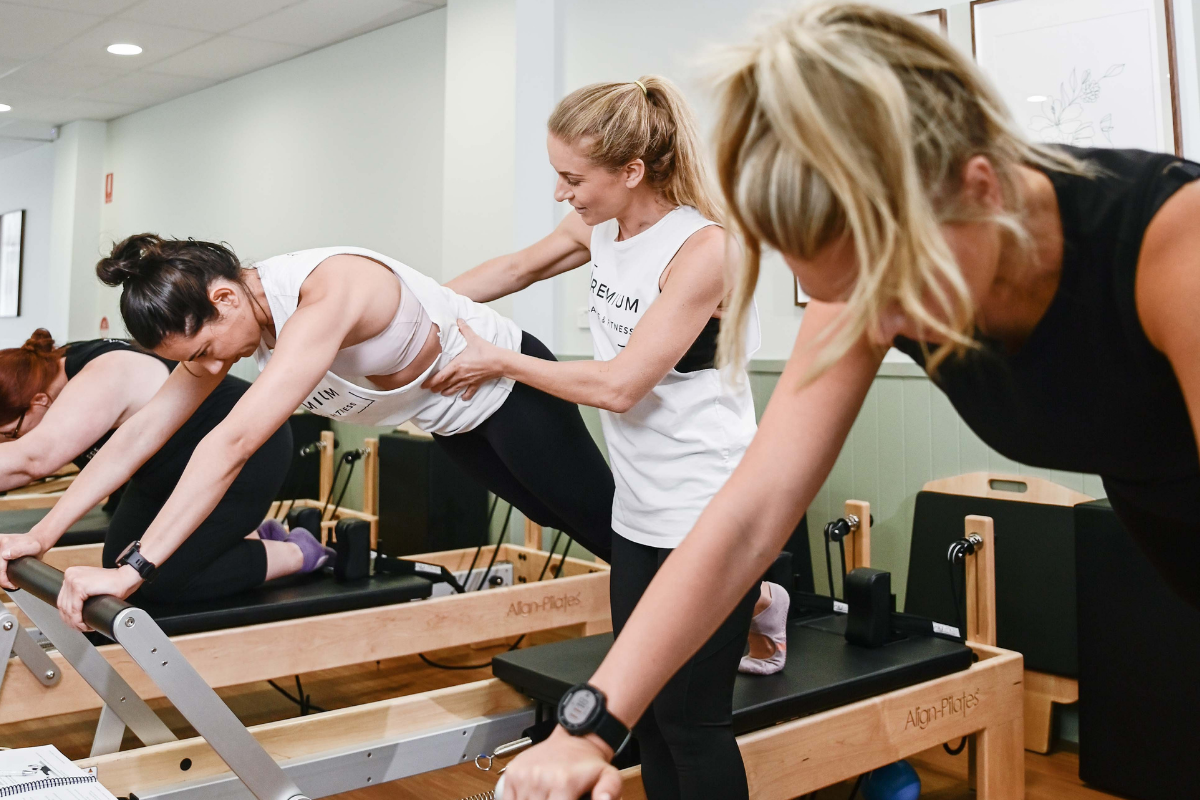
Pilates Body Awareness
In Reformer Pilates, body awareness is essential. It’s about being mindful of how your body moves and how each exercise affects your muscles, joints, and alignment. Pilates encourages you to focus on proper posture, breath control, and muscle activation. As you move through each exercise, you’ll become more aware of areas that need strengthening or stretching, which helps prevent injury and improve your overall performance. This heightened awareness also improves balance, coordination, and flexibility, making every movement more effective and intentional.
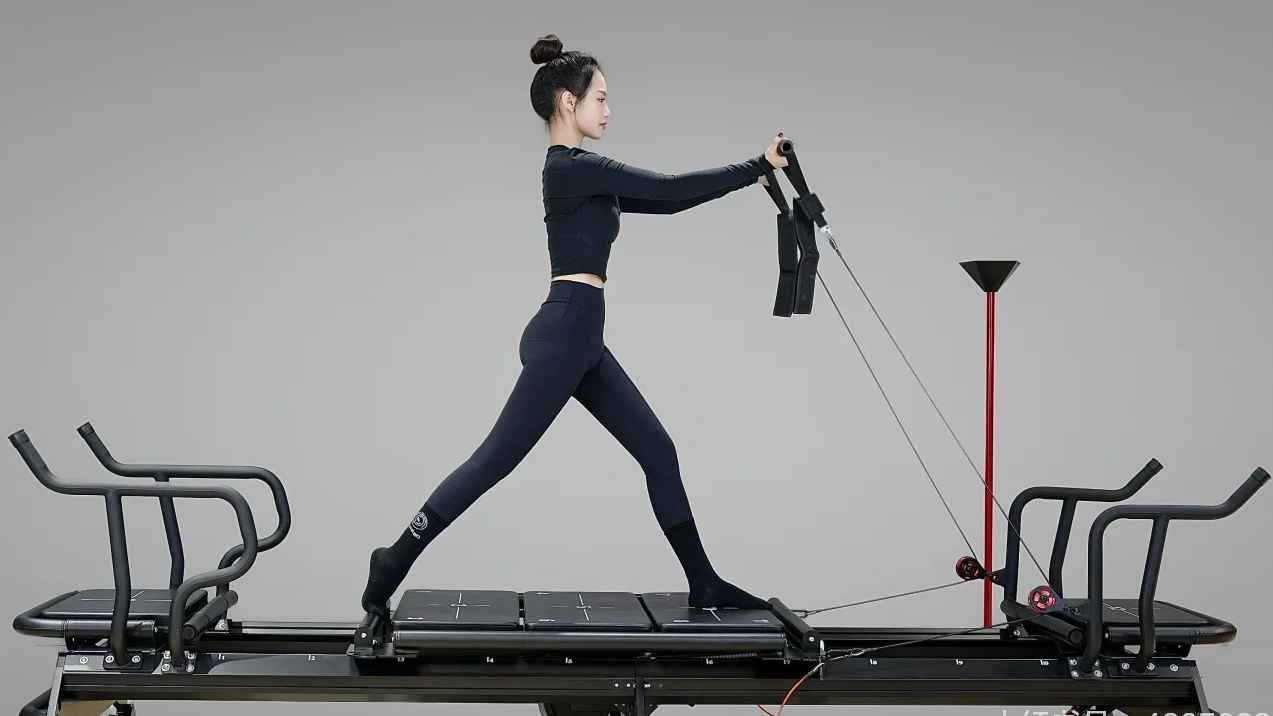
Five body shaping Pilates exercises suitable for beginners
Reformer Pilates provides you techniques to exercise your body with equipment consisting springs, a sliding platform, and belts. This configuration allows you to adjust the resistance, making it ideal for both beginners and advanced practitioners. You have the support for your joints and can engage multiple muscle groups simultaneously.
The Hundred
- ● Focus: Core activation, breath control
- ● How: Lie on your back, knees bent at tabletop position. Lift your head and shoulders slightly off the mat. Pump your arms up and down with small movements while inhaling for 5 counts and exhaling for 5 counts, repeat 10 times (total 100 pumps).
- ● Tip: Keep your neck relaxed and engage your core gently.
Leg circles
- ● Focus: Hip mobility, core stability
- ● How: Lie on your back, one leg extended straight up toward the ceiling. Keep the other leg bent or flat. Slowly circle the raised leg clockwise 5 times, then counterclockwise 5 times. Switch legs.
- ● Tip: Keep your pelvis stable and avoid rocking side to side.
Pelvic Curl
- ● Focus: Glutes, hamstrings, spine articulation
- ● How: Lie on your back, knees bent, feet flat hip-width apart. Slowly lift your pelvis off the mat into a bridge position, vertebra by vertebra. Hold for a moment, then lower back down slowly.
- ● Tip: Press evenly through your feet and avoid overextending your lower back.
Spine Stretch Forward
- ● Focus: Spine flexibility, hamstrings
- ● How: Sit up tall with legs extended hip-width apart, feet flexed. Inhale to lengthen your spine, exhale to reach forward from your hips, keeping your back straight. Hold for a few seconds and roll back up slowly.
- ● Tip: Lead with your chest rather than rounding your shoulders.
Wall Roll Down
- ● Focus: Spinal articulation, core engagement
- ● How: Stand with your back against a wall, feet hip-width apart, slight bend in knees. Slowly roll your spine down, one vertebra at a time, reaching toward your toes. Then roll back up, stacking your spine.
- ● Tip: Keep your shoulders relaxed and core engaged.
We are committed to delivering exceptional support and
top-tier service whenever you need it!
✅ Conclusion
Reformer Pilates offers a fresh, effective way to build strength, improve posture, and support joint health. With smooth, guided movements and low-impact resistance, it’s ideal for all fitness levels—even if you're just starting out.
Our professional-grade Reformer Pilates machines are designed to help you get the most out of every session. From durable frames to adjustable springs and ergonomic carriage design, every detail supports your comfort, control, and results.
Looking to purchase a Pilates reformer machine? Visit our product page or feel free to contact us via WhatsApp +86-13775339109, WeChat 13775339100. We're here to assist you!

Talk To Our Experts
Connect with an NQ expert to discuss your product needs
and get started on your project.
Frequently Asked Questions
What is Reformer Pilates, and how is it different from mat Pilates?
It provides resistance and support to your action, which allows you to build strength, balance, and flexibility more efficiently than mat Pilates.
Do I need any experience before trying my first reformer Pilates class?
No, you don’t need any experience. Majority of studios provide beginner classes. Instructors will walk you through, providing an accessible and secure entry point.
Is reformer Pilates safe for people with injuries or health conditions?
Yes, but as with all activities, always inform your instructor of any injuries or conditions. While reformer pilates can be modified for lots of needs, having professional guidance is your best chance at staying safe.
Will reformer Pilates help with weight loss?
Reformer Pilates can aid in weight loss by developing lean muscle and torching calories. Paired with a nutritious diet and lifestyle, you might notice slow progressions with your physique.
Can I do reformer Pilates if I am not flexible or athletic?
Totally. Reformer pilates for all fitness levels. You don’t have to be flexible or athletic. You will get strong and flexible as a result.
How long before you see results from Reformer Pilates?
Reformer Pilates is a great way to improve all over body strength, stability, flexibility, balance and co-ordination – all in one class! Reformer Pilates, as with any other exercise, should be practiced several times a week, over several months to see noticeable improvements in your body.
Why is reformer Pilates so difficult?
The Reformer machine allows for a greater range of motion compared to mat Pilates. This makes it possible to perform deeper stretches and more complex movements, which increases the overall difficulty of the workout.
Why am I not losing weight with Reformer Pilates?
You may not lose weight with Pilates if you're NOT in a calorie deficit over time. To lose weight, you must eat fewer calories than your body needs.
Does Pilates change your body shape?
Pilates can genuinely reshape your body—creating long, lean muscles, improving posture, and enhancing core strength.
Can Pilates be my only workout?
Because Pilates is a low impact exercise, it can be done more frequently than other forms of exercise as it doesn't require as much recovery between sessions. If Pilates is your only form of exercise, we recommend 2-3 sessions per week, ideally with a mix of equipment Pilates and mat-based Pilates.
Post time: Jul-19-2025
